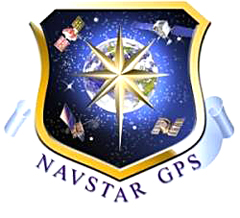The European GNSS program expects to gain an additional €7 billion (US$9.1 billion) budget for 2014–2020 to support Galileo and the European Geostationary Navigation Overlay Service (EGNOS), a satellite-based augmentation system that currently provides differential corrections to GPS signals, according to Paul Flament, Galileo and EGNOS program manager for the European Commission. He spoke at the 2012 Munich Satellite Navigation Summit that ended on March 15.
The European GNSS program expects to gain an additional €7 billion (US$9.1 billion) budget for 2014–2020 to support Galileo and the European Geostationary Navigation Overlay Service (EGNOS), a satellite-based augmentation system that currently provides differential corrections to GPS signals, according to Paul Flament, Galileo and EGNOS program manager for the European Commission. He spoke at the 2012 Munich Satellite Navigation Summit that ended on March 15.
The Galileo program has already contracted for development and manufacturing of 26 operational satellites, including the two in-orbit validation (IOV) spacecraft launched last October and two more expected to go up from the European spaceport in Kourou, French Guiana, this coming September.
Javier Benedicto, head of the European Space Agency (ESA) Galileo Project Office, outlined an ambitious schedule to get the additional 22 satellites into orbit using a combination of Russian Soyuz rockets carrying two satellites each and modified Ariane 5 rockets with four spacecraft aboard.
ESA plans three Soyuz launches in 2013 (beginning the second quarter of the year), two Soyuz and one Ariane 5 launch in 2014; and two Ariane 5 launches in 2015.
Along the way, the program expects to declare an initial operational capability in 2014.
The program still needs to fund an additional four SVs to reach its planned 30-satellite constellation (27 + 3 spares).
Günter Hein, head of ESA’s EGNOS and GNSS Evolution Program Department, noted that testing had been completed the week before the Summit on the first IOVs and that signals are transmitting on all frequencies.
Hein said that an ESA Council decision was expected in November on continuation of the evolution programs. “It may sounds a little strange when we only have the first two-by-two satellites [IOVs plus prototypes GIOVE-A and -B] to be talking about the next generation,” he added, pointing out the long lead time needed to sustain and modernize GNSS systems.
Meanwhile, the European GNSS Agency (known by the acronym GSA), will open its new offices in Prague, Czech Republic, this September, from which the organization will continue its security and market development responsibilities for Galileo and EGNOS.
The security role has become more urgent following Europe’s decision last September establishing rules for access to Galileo’s Public Regulated Service (PRS) signal.
A session on “Galileo and Security,” reflecting the Summit’s overall theme, revealed that numerous practical challenges remain on how those rules will be implemented. These include questions about participation by non-European Union nations and international organizations, manufacturing of PRS equipment, differences in how public safety and security services are delivered (public or private sector) in various countries, different levels of technological maturity and institutional sophistication among user groups, and multinational and cross-border uses.






